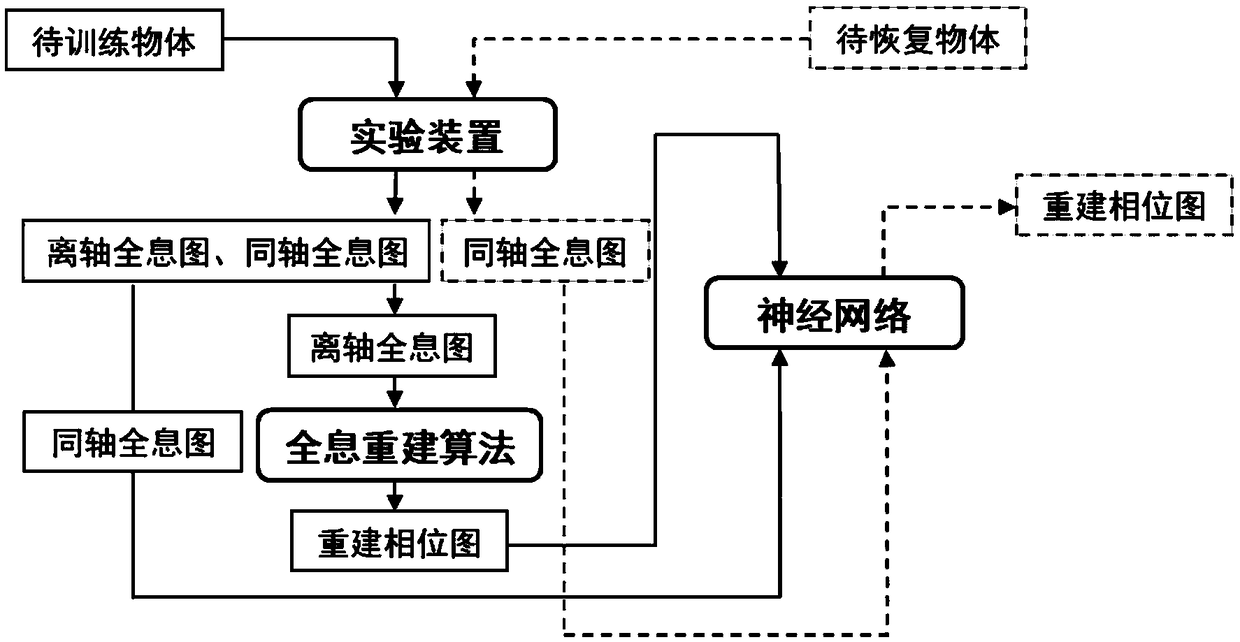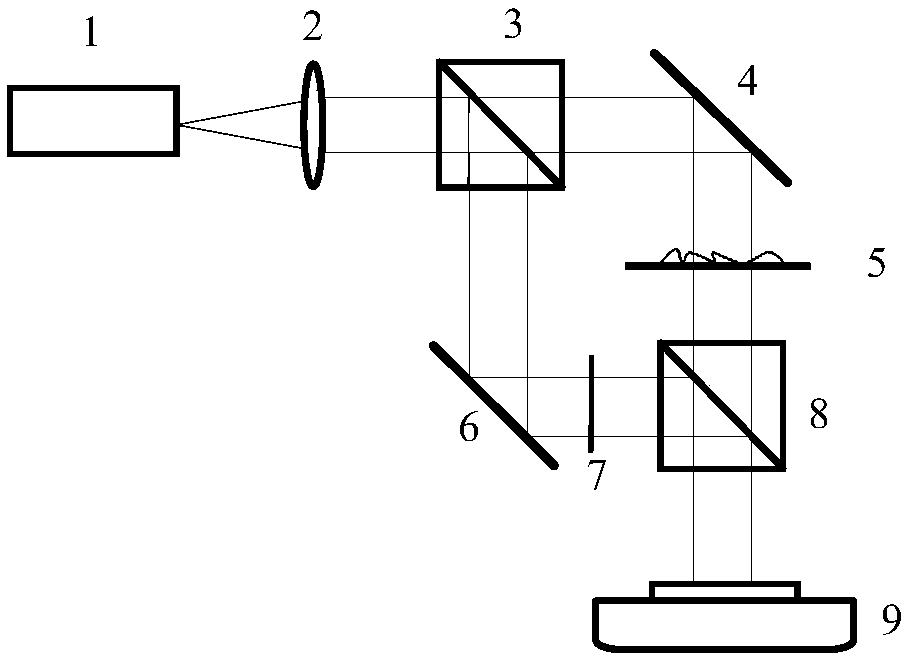Holographic reconstruction algorithm based on deep learning
A technology of deep learning and algorithm, applied in the field of digital holography and optics, can solve complex and massive calculation problems, and achieve the effect of simple optical path and fast calculation
- Summary
- Abstract
- Description
- Claims
- Application Information
AI Technical Summary
Problems solved by technology
Method used
Image
Examples
Embodiment 1
[0028] Embodiment 1: A kind of work flow that realizes the holographic reconstruction algorithm based on deep learning described in the present invention is as follows:
[0029] use as image 3 The off-axis holographic recording optical path includes: laser 1, collimating lens 2, non-polarizing beam splitting prism 3, mirror 4, cell sample 5, mirror 6, shutter 7, non-polarizing beam splitting prism 8, and CCD camera 9.
[0030] To execute the training phase: use image 3 In the optical path shown, first, the shutter 7 is opened, the reference light wave and the object light wave interfere on the target surface of the CCD camera 9, and the off-axis hologram H of the cell sample 5 is collected. n , and then close the shutter to collect the coaxial hologram D of the cell sample 5 n . Replace the cell sample, repeat the above process, and get the H of k samples n and D n , where n=1,2,3,4...k. The phase map P of the corresponding cell was obtained using a digital holographic...
PUM
 Login to View More
Login to View More Abstract
Description
Claims
Application Information
 Login to View More
Login to View More - R&D
- Intellectual Property
- Life Sciences
- Materials
- Tech Scout
- Unparalleled Data Quality
- Higher Quality Content
- 60% Fewer Hallucinations
Browse by: Latest US Patents, China's latest patents, Technical Efficacy Thesaurus, Application Domain, Technology Topic, Popular Technical Reports.
© 2025 PatSnap. All rights reserved.Legal|Privacy policy|Modern Slavery Act Transparency Statement|Sitemap|About US| Contact US: help@patsnap.com



